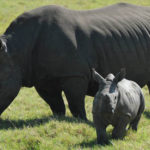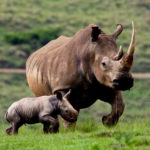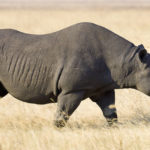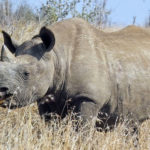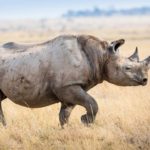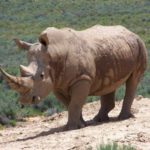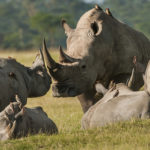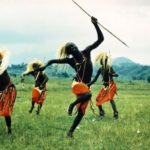Facts about rhinos
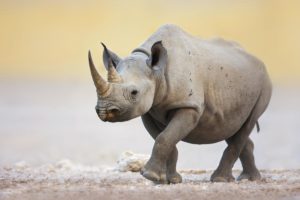 Rhinos are one of the largest animals on the planet. His recognition of the rhino was due to the horn, growing on the top of the nose. Although the horn made him famous, it also served as a bad name, because of which all kinds of rhinoceroses are on the verge of total extinction. Now the efforts of conservation measures in some reserves in Asia and Africa, the population of rhinoceroses began to grow. And this unique animal has a chance to renew its once-thriving population. But what do we know about the rhinoceros, except that he has a horn, almost nothing. Therefore, having collected the most interesting facts about the rhinoceros, we suggest to get acquainted with it more closely.
Rhinos are one of the largest animals on the planet. His recognition of the rhino was due to the horn, growing on the top of the nose. Although the horn made him famous, it also served as a bad name, because of which all kinds of rhinoceroses are on the verge of total extinction. Now the efforts of conservation measures in some reserves in Asia and Africa, the population of rhinoceroses began to grow. And this unique animal has a chance to renew its once-thriving population. But what do we know about the rhinoceros, except that he has a horn, almost nothing. Therefore, having collected the most interesting facts about the rhinoceros, we suggest to get acquainted with it more closely.
- The maximum speed with which a rhinoceros can run is 50 km / h.
- The horn of a rhinoceros is very strong, but it consists not of bone, but of keratin (a substance that is in the nails and hair of a person) and the outer layer of hair.
- To eat, a rhinoceros for a day needs at least 70 kg of vegetation.
- The skin thickness of a rhinoceros can reach 8 cm.
- Rhinoceroses can get sunburn. To avoid this, animals are lying in the mud.
- Rhinos have very sensitive hearing and sense of smell.
- The Indian rhinoceros were used in hostilities by Indian Maharajas.
- The biggest of today’s living rhinos is the White Rhinoceros.
- The rhinoceros stomach processes food, but it does not absorb useful substances.
- In 1948, in order to clear the territory of Kenya for agriculture, hunters were hired with a license to shoot rhinoceroses. This one hunter killed 500 rhinoceroses per day.
- Black rhinoceroses consume more than 200 species of vegetation. Especially he likes hard thorny plants.
- Rhinoceroses communicate with the help of odors, especially the abundant information of their urine and feces.
- Sometimes females of white rhinos gather and live in groups.
- The maximum lifespan of a rhinoceros in the wild is 40 years.
- The maximum number of calves that a rhinoceros female can give is 8.
- The closest relative of the Sumatran rhinoceros is a woolly rhinoceros, extinct as far back as the 9th and 14th centuries BC.
- The Sumatran rhinoceros, unlike other species, reproduce poorly in captivity.
- The Sumatran rhinoceros live in impenetrable forests and lead a hermitic way of life.
- In South Africa auctions are annually held on the sale of rhinos in private park safaris, where they are given the same protection as in the reserves. The money earned from their sale goes to the protection of the rhino.
- The longest horn of an Indian rhinoceros is 60 centimeters, and in a white rhinoceros – 1.58 meters.
- The main purpose of horns in rhinoceroses is to separate bushes and thickets to obtain food for themselves.
- The Indian rhino differs from its African counterparts not only with its skin and long horn, but also with its love of water. In hot weather, Indian rhinos come into the water and stay there until the heat disappears. African rhinos do not resort to such methods of cooling.
- In the 70-80s of the XX century, in order to protect Indian rhino populations in the Indian national park Kaziranga, it is allowed to shoot at any armed person who is not a member of the park.
